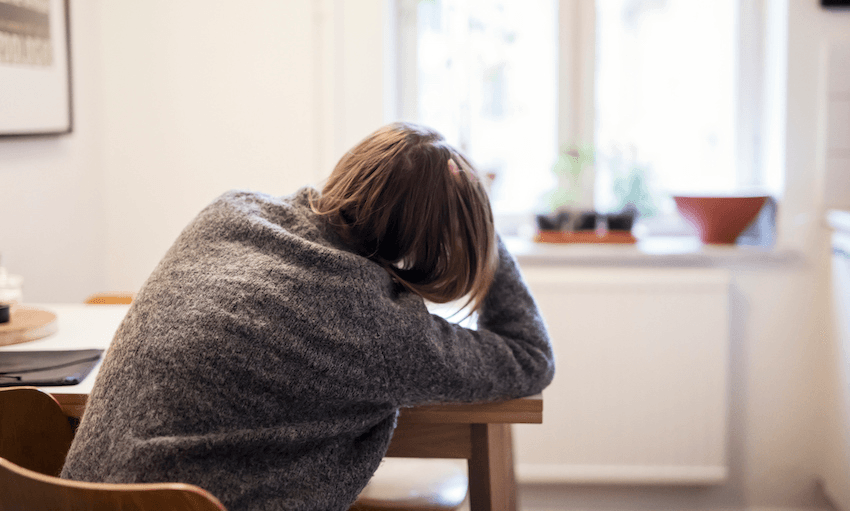Since the late 1990s, suicide rates among young men in New Zealand have increased by almost 50%. ‘Zero Suicide Aotearoa’, the latest report from a cross-party mental health group, is looking to address these dismal suicide rates.
After New Zealand placed 35th out of 41 OECD countries for our child wellbeing in the Unicef 2020 report card last week, it’s timely that the government’s cross-party group on mental health has today released a report calling for a multilevel approach to suicide prevention. Their ultimate goal is sustainable wellbeing throughout the country and a cohesive and inclusive society leading to a zero suicide future.
While the World Health Organisation indicated the global average number of suicides per 100,000 was 10.5 in 2016, the New Zealand average has remained consistently higher than this. Data from 2017/2018 records New Zealand’s suicide rate at 13.67 deaths per 100,000, and the statistics are worse when broken down into demographics.
The statistics for Māori in particular highlight a significant problem in the way mental health is treated in poorer communities. Over 100% higher than the national average, the Māori suicide rate was 28.23 per 100,000 in 2018/2019, with rangatahi Māori particularly at risk.
Released on World Suicide Prevention Day, this cross-party report titled “Zero Suicide Aotearoa” was assembled by a group comprised of one MP from each party currently in parliament.
The report recognises the need for tailored responses to suicide depending on socio-economic and racial contexts and says while some blanket options could help the general population, there are certain demographics that require local, specialist services.
“Dedicated strategies are still needed to account for age, sex and cultural differences in the population – especially those who are known to have a higher risk of suicidal behaviour,” the report says.
Highlighting the need for Te Tiriti o Waitangi to underpin all approaches for rangatahi Māori, the report suggests four recommendations for all of government:
- Embed and enact Te Tiriti into all policy and practice to support mana motuhake
- Urgently address the impact of socioeconomic determinants of health on whānau, including poverty, alcohol, racism, housing and unemployment
- Invest in what works for Māori, iwi, hapū and whānau – invest in, fund and build communities to lead initiatives that support communities in suicide prevention and postvention
- Work collectively, national and locally to leverage government investment in what works for Māori.
Psychotherapist Alayne Mikahere-Hall (Ngāti Whatua, Te Rarawa, Tainui, Pākehā), a specialist in Māori and indigenous mental health, says the report is a good start but the government needs to consider who the best people are to come up with strategies that will work in a specific New Zealand context.
“If we’re going to take seriously the Zero Suicide Aotearoa framework then we need a really good plan for that. We need to be thinking about who leads that plan and who follows in different areas. If we’re talking about zero tolerance for Māori suicide then we need to think about positioning Māori as the leaders in that space.”
While it’s great that the government seems to be taking our dismal suicide statistics more seriously now than in previous years, she says there’s a need to address who are the best people to be producing reports on what works in the community.
“Who’s better positioned to produce these reports? It’s about how the government positions themselves in terms of supporting the work that needs to occur, and where they take their advice from – knowing when they take the lead in these conversations and when they follow those who are most appropriate to be doing this work.”
While there is a lot of work needed before “Zero Suicide” is achieved, Mikahere-Hall appreciates the report’s clear message that suicide is not the result of any one issue, and it will take a combined effort to stamp out.
“We’re not talking about a one size fits all approach. If there’s one thing in Aotearoa New Zealand we have to think about, it’s the historical context, the historical trauma, intergenerational trauma and we also have to think about what all the risk factors are and what the safety buffers are that help protect our rangatahi and people who are burdened.”
For Māori in particular, whose rates are more than two times higher than the New Zealand average, the urgency to address the factors contributing to suicide is more potent than other demographics. Mikahere-Hall knows it will take investment in both national and community initiatives to create a successful prevention strategy.
“We need a bottom-up approach just as we need a top-down approach to support the work that is happening at the ground level. It’s about knowing your communities and if we’re talking about approaches that are beneficial for Māori, then Māori need to design what that approach looks like for themselves. It’s about investing in kaupapa Māori solutions and recognising culture as a cure.”
It’s evident a new approach needs to be taken to address New Zealand’s dismal suicide rates, and Mikahere-Hall is hopeful “Zero Suicide Aotearoa” signals the beginning of that change.
“It’s about investing in the village so that everybody in the village keeps safe, healthy, and the people in the village can help to buffer those that are most vulnerable. That’s what it’s all about.”

